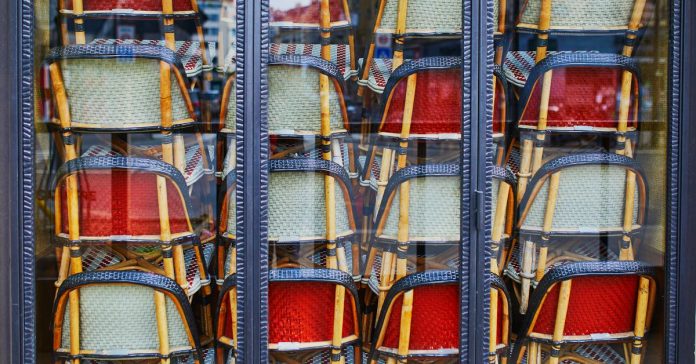All through the pandemic, eating places have struggled to entry monetary assist from the federal authorities, so when the American Rescue Plan stimulus invoice, which was signed into regulation in March 2021, included a $28.6 billion Restaurant Revitalization Fund, it was thought of a lifeline. In contrast to the much-maligned Paycheck Safety Program loans, this cash was to be distributed as grants, not loans, and wouldn’t should be paid again by restaurant house owners if utilized by March 2023. Although it gave the impression of a promising program to determined restaurateurs, this system got here to a shuddering halt on June 30 when funds had been depleted, leaving a path of distressed, confused, and indignant restaurant house owners not sure what’s subsequent.
In accordance with the Los Angeles Occasions, the Small Enterprise Administration, which is accountable for overseeing this system, had obtained greater than 1 / 4 of one million functions by early Could, including as much as a necessity of $65 billion in monetary support. That was already greater than double the quantity of complete cash within the fund and by the point it closed, in keeping with the New York Occasions, 370,000-plus enterprise house owners had utilized for grants totaling upwards of $75 billion in funding. Solely about 105,000 companies had been accredited for grants, averaging simply barely above $272,000 per restaurant.
Although the restaurant industry was hit more durable than maybe some other — with clients urged to not dine out, and restaurant employees at excessive threat of contracting COVID-19 within the tight confines of kitchens and eating rooms — meals employees and restaurant house owners weren’t prioritized for federal bailouts or industry-specific reduction applications.
The Paycheck Safety Program loans, rolled out final 12 months to assist eating places cowl staffing prices, left rather a lot to be desired. For these loans to be forgiven, a majority of the cash needed to go towards preserving workers on payroll, despite the fact that restricted capability and restrictions on indoor eating made it almost not possible to retain a full workers. And earlier than many small restaurant house owners may even get their arms on a mortgage, big chain eating places drained the fund.
In contrast to the PPP program, which left loopholes for main chains to use for big loans (franchise places can nonetheless apply for these grants), the Restaurant Revitalization Fund aimed to achieve companies owned by ladies, veterans, and folks from economically and socially deprived teams — lots of whom missed out on earlier rounds of monetary reduction. The Small Enterprise Administration prioritized these companies’ functions for the primary three weeks of the fund’s existence.
In idea, this was an effective way to assist companies that had been neglected in earlier rounds of funding. Solely, some white enterprise house owners sued on the premise that the prioritization of those particular communities was discriminatory. Complaints had been raised by white enterprise house owners in Tennessee, Texas, and Pennsylvania, and in late Could, as reported by the Occasions, the Small Enterprise Administration halted funds on the initially prioritized functions. Hundreds of marginalized enterprise house owners who thought that they had been going to be prioritized had their approvals revoked. These enterprise house owners had been instructed their functions can be accredited “as soon as (the SBA) completes processing all beforehand filed non-priority functions, and solely then if the (Restaurant Revitalization Fund) will not be first exhausted,” in keeping with the Occasions. The lawsuits, backed by conservative teams in all three states (together with one introduced by former Trump administration officers together with Stephen Miller) resulted within the white-owned eating places receiving grants. Conservative teams have fought tooth and nail to make sure COVID-relief funding will not be distributed and prioritized on the premise of race and gender.
On this case, hundreds of restaurateurs of marginalized and oppressed communities who made investments and rehired workers assuming they’d quickly see cash deposited into their accounts had been left reeling. For companies that had been fortunate sufficient to obtain this newest spherical of SBA funds, grants could also be equal to the quantity of income a restaurant misplaced throughout the pandemic, capped at $10 million per enterprise, and $5 million per location. In response to frustration on the very restricted and restrictive methods PPP cash might be spent, restaurant house owners have been given extra autonomy to determine the place they should direct these funds to maintain their companies open and their workers employed.
When this system was first proposed by Rep. Earl Blumenauer of Oregon final 12 months, he hoped the fund would distribute $120 billion in grants. Blumenauer suspected from the fund’s inception that it will be fairly common, and that his colleagues might need to approve extra funding as soon as they noticed how excessive demand was in relation to the drastically slimmed-down fund that handed by Congress. Had the Revitalization Fund been infused with even a portion of the extra $90-plus billion that was first proposed, it will nonetheless have the sources to assist many extra eating places.
Blumenauer launched an announcement on July 1, saying that “A whole bunch of hundreds of native eating places nonetheless desperately need assistance to maintain their doorways open.” The consultant says that he’s launched laws to “add $60 billion to the Restaurant Revitalization Fund, sufficient to cowl all excellent candidates. In two weeks, we’ve secured greater than 175 bipartisan cosponsors, however time is ticking. We have to act now earlier than it’s too late.” If the Revitalization Fund is certainly revitalized, it’s unclear whether or not it can prioritize the various marginalized and neglected enterprise house owners that it initially meant to assist (and that also want funding), or whether or not a stream of lawsuits have completely reworked the fund.
Up to date on July 2, 2021 at 1:15 pm.







